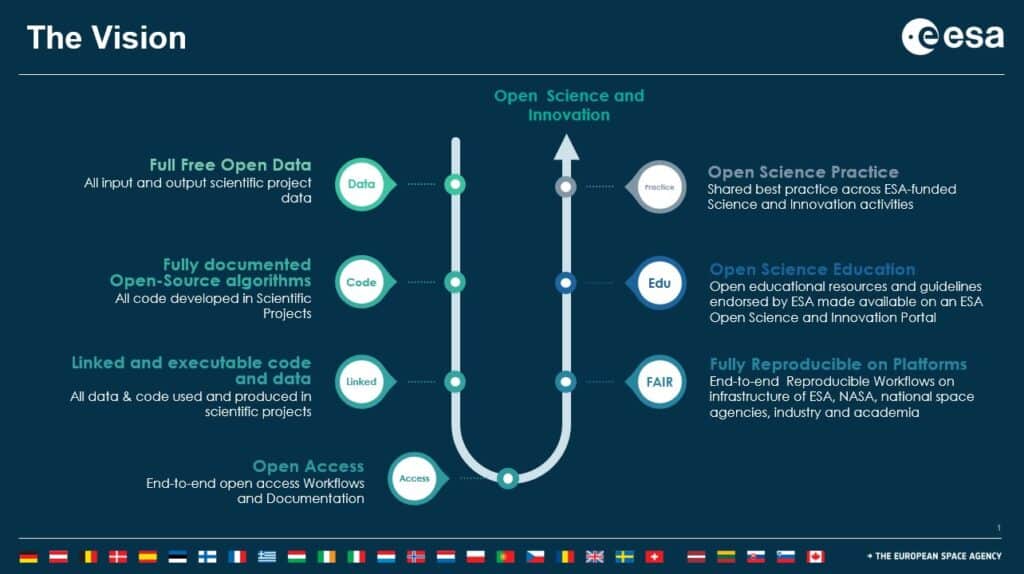Why do we need Open Science Copy
Space Agencies and International Organisations across the globe promote Open Science and support its practice by the scientific community through dedicated programmes. This course, for example, is part of the support to Earth Observation Open Science by the European Space Agency (ESA).
ESA, just like other European organisations such as the European Commission, has a long standing commitment to Open Science. A prominent example is the provision of full free and open Earth Observation data from its science missions (i.e. the Earth Explorers) and from the Copernicus Programme (e.g. the Sentinel missions). However, Open Science goes much beyond open data. ESA’s vision for Open Science covers the full research cycle (see ESA vision figure). Simply put, a piece of research fully adheres to Open Science principles if:
- all the data, code, and documentation of the respective research are FAIR, open and linked to one another
- the research is reproducible across various platforms (i.e. cloud platforms or computational systems)
- the research is maintained so that it is accessible to the community in the long-term
This requires that the scientific community adheres to the same common (or compatible) practices when writing and documenting code, preparing and sharing data or publishing their research in journals.
- Role of Open Science in ESA’s Agenda 2025
- NASA Transform to Open Science (TOPS) within NASA’s Open-Source Science Initiative (OSSI)
- American Geoscience Union’s vision of open science



